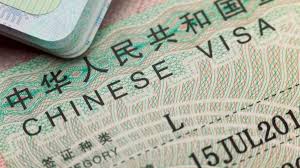By :- Shubhendra Rajawat
China has announced visa-free entry for citizens of 75 countries, including EU nations and Latin American countries, in a major push to revive tourism and boost its economy post-pandemic.
Beijing: In a landmark decision aimed at revitalizing its tourism sector, China has rolled out visa-free travel for citizens of 75 countries. The move is part of a broader strategy to attract more international tourists, accelerate economic recovery, and enhance China’s global image through increased cultural and people-to-people exchanges.
After reopening its borders in early 2023 following prolonged COVID-19 restrictions, China saw just 13 million foreign tourists arrive that year—less than half of the 30 million tourists recorded in 2019. To overcome the pandemic’s long-term impact on tourism, the Chinese government has implemented a bold new visa policy, offering 30-day visa-free stays to eligible travelers.

Visa-Free Policy Expansion
The visa-free entry initiative began in December 2023, with France, Germany, Italy, the Netherlands, Spain, and Malaysia being among the first countries to benefit. In the months since, the policy has expanded to include all European Union nations, five Latin American countries, Uzbekistan, and four Middle Eastern nations.
From July 16, 2025, citizens of Azerbaijan will also enjoy visa-free access to China, bringing the total number of eligible countries to 75.
While the visa-free arrangement is currently in a trial phase for one year for most countries, Chinese officials have indicated it may become a long-term or even permanent feature depending on its success.
Positive Impact on Tourism
The policy is already bearing fruit. In 2024, approximately 20 million tourists entered China without a visa, accounting for more than half of all foreign visitors. Many travelers have expressed appreciation for the simplified process, which eliminates the stress and cost associated with traditional visa applications.
Strategic Intent
China’s visa liberalization aligns with its broader goal to strengthen international ties, stimulate domestic markets, and restore global connectivity post-pandemic. It also supports the government’s push to boost “soft power” by showcasing Chinese culture, heritage, and hospitality to a broader international audience.
The policy shift represents one of the most significant overhauls in China’s visa regulations in recent history, reflecting the country’s renewed openness and ambition on the global tourism stage.

